Blog
What Can Cause an Ankle Rash?
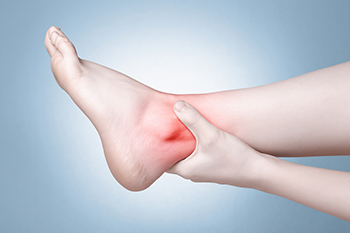
Ankle rashes can occur due to a variety of factors, and identifying the cause is key to effective treatment. One common cause is contact dermatitis, which happens when the skin reacts to an irritant or allergen. This could include new soaps, lotions, or even certain fabrics. Allergies to foods, medications, or insect bites can also trigger rashes on the ankles, often accompanied by itching and redness. Hives, which are raised, red welts that appear suddenly, can develop in response to stress, certain foods, or medications. Another cause of ankle rashes is sunburn, which can occur when the skin is overexposed to UV rays, leading to redness, pain, and peeling. In some cases, fungal infections like athlete’s foot can cause a rash on the ankles. If an ankle rash persists or worsens, it is suggested that you consult a podiatrist who can determine the underlying cause, and guide you toward appropriate treatment methods.
Ankle pain can have many different causes and the pain may potentially be serious. If you have ankle pain, consult with Dr. Kendall Blackwell from InStride Wilson Podiatry Associates. Our doctor will assess your condition and provide you with quality foot and ankle treatment.
Ankle pain is any condition that causes pain in the ankle. Due to the fact that the ankle consists of tendons, muscles, bones, and ligaments, ankle pain can come from a number of different conditions.
Causes
The most common causes of ankle pain include:
- Types of arthritis (rheumatoid, osteoarthritis, and gout)
- Ankle sprains
- Broken ankles
- Achilles tendinitis
- Achilles tendon rupture
- Stress fractures
- Tarsal tunnel syndrome
- Plantar fasciitis
Symptoms
Symptoms of ankle injury vary based upon the condition. Pain may include general pain and discomfort, swelling, aching, redness, bruising, burning or stabbing sensations, and/or loss of sensation.
Diagnosis
Due to the wide variety of potential causes of ankle pain, podiatrists will utilize a number of different methods to properly diagnose ankle pain. This can include asking for personal and family medical histories and of any recent injuries. Further diagnosis may include sensation tests, a physical examination, and potentially x-rays or other imaging tests.
Treatment
Just as the range of causes varies widely, so do treatments. Some more common treatments are rest, ice packs, keeping pressure off the foot, orthotics and braces, medication for inflammation and pain, and surgery.
If you have any questions, please feel free to contact our office located in Wilson, NC . We offer the newest diagnostic and treatment technologies for all your foot care needs.
Types of Conditions Podiatrists Treat

A podiatrist specializes in diagnosing, treating, and preventing conditions related to the feet, ankles, and lower extremities. Podiatrists are trained to address foot problems, including bunions, heel pain, ingrown toenails, and plantar fasciitis. They also treat more serious conditions such as fractures, infections, and deformities that affect mobility. Podiatrists play an important role in managing chronic diseases that impact foot health, such as diabetes, which can lead to complications like neuropathy and poor circulation. There are various types of podiatrists based on their areas of expertise. Some specialize in surgery, performing procedures to correct deformities or injuries, while others focus on sports medicine, pediatric care, or diabetic foot care. Regardless of their specialty, podiatrists are essential in maintaining foot health and ensuring proper mobility for people of all ages. If you have foot pain or developed a foot condition, it is suggested that you consult a podiatrist who can accurately diagnose and treat various foot conditions.
If you are dealing with pain in your feet and ankles, you may want to seek help from a podiatrist. Feel free to contact Dr. Kendall Blackwell from InStride Wilson Podiatry Associates. Our doctor can provide the care you need to keep you pain-free and on your feet.
What Is a Podiatrist?
A podiatrist is a doctor of podiatric medicine who diagnoses and treats conditions of the foot, ankle, and related structures of the leg. Your podiatrist may specialize in a certain field such as sports medicine, wound care, pediatrics, and diabetic care. Podiatrists have the ability to become board certified through training, clinical experience, and then taking an exam.
What Do Podiatrists Do?
On a daily basis, a podiatrist may perform the following activities:
- Diagnose foot ailments such as ulcers, tumors, fractures, etc.
- Use innovative methods to treat conditions
- Use corrective orthotics, casts, and strappings to correct deformities
- Correct walking patterns and balance
- Provide individual consultations to patients
It is very important that you take care of your feet. It’s easy to take having healthy feet for granted, however foot problems tend to be among the most common health conditions. Podiatrists can help diagnose and treat a variety of feet related conditions, so it is crucial that you visit one if you need assistance.
If you have any questions please feel free to contact our office located in Wilson, NC . We offer the newest diagnostic and treatment technologies for all your foot and ankle needs.
Plantar Warts Can Be Treated!
The Cuboid Bone Is Small but Essential for Foot Stability
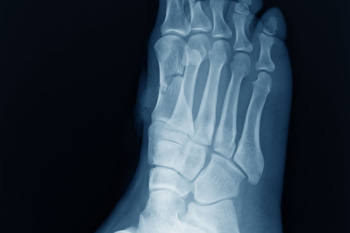
The cuboid bone may be small, but it plays a big role in foot function. Located on the outer midfoot, it acts as a stabilizer, supporting weight distribution and aiding movement. It also helps maintain the arch and provides a smooth transition when walking. Because of its key position, even minor misalignment can lead to pain and mobility issues. One common problem is cuboid syndrome, where the bone shifts out of place due to overuse, injury, or wearing tight footwear. This can cause sharp pain along the outer foot, stiffness, and difficulty bearing weight. Dancers, athletes, and people with flat feet are especially at risk. Ignoring symptoms can lead to chronic discomfort and changes in gait. Treatment includes rest, foot strengthening, and sometimes realignment techniques. If you are experiencing this type of pain and it persists or worsens, it is suggested that you see a podiatrist to restore proper function and prevent further issues.
Cuboid syndrome, also known as cuboid subluxation, occurs when the joints and ligaments near the cuboid bone in the foot become torn. If you have cuboid syndrome, consult with Dr. Kendall Blackwell from InStride Wilson Podiatry Associates. Our doctor will assess your condition and provide you with quality foot and ankle treatment.
Cuboid syndrome is a common cause of lateral foot pain, which is pain on the outside of the foot. The condition may happen suddenly due to an ankle sprain, or it may develop slowly overtime from repetitive tension through the bone and surrounding structures.
Causes
The most common causes of cuboid syndrome include:
- Injury – The most common cause of this ailment is an ankle sprain.
- Repetitive Strain – Tension placed through the peroneus longus muscle from repetitive activities such as jumping and running may cause excessive traction on the bone causing it to sublux.
- Altered Foot Biomechanics – Most people suffering from cuboid subluxation have flat feet.
Symptoms
A common symptom of cuboid syndrome is pain along the outside of the foot which can be felt in the ankle and toes. This pain may create walking difficulties and may cause those with the condition to walk with a limp.
Diagnosis
Diagnosis of cuboid syndrome is often difficult, and it is often misdiagnosed. X-rays, MRIs and CT scans often fail to properly show the cuboid subluxation. Although there isn’t a specific test used to diagnose cuboid syndrome, your podiatrist will usually check if pain is felt while pressing firmly on the cuboid bone of your foot.
Treatment
Just as the range of causes varies widely, so do treatments. Some more common treatments are ice therapy, rest, exercise, taping, and orthotics.
If you have any questions, please feel free to contact our office located in Wilson, NC . We offer the newest diagnostic and treatment technologies for all your foot care needs.
Painful Ingrown Toenails
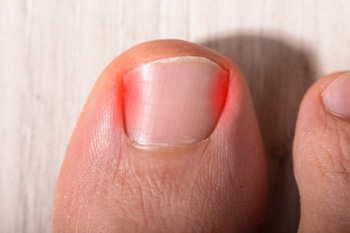
Ingrown toenails occur when the edges of your toenail grow into the surrounding skin, leading to pain, redness, and swelling. Causes of ingrown toenails include improper nail trimming, cutting nails too short or rounding the edges, wearing tight or ill-fitting shoes, and injury to the toe. In some cases, genetics may play a role, with some people being more prone to the condition due to the natural shape of their nails. The affected area can become tender, and in some cases, you may notice drainage or an infection. Typically, this happens on the big toe but can affect any toenail. The discomfort often worsens when wearing shoes or walking, and without treatment an ingrown toenail can become more prone to infection. A podiatrist can help by properly treating the ingrown portion of the nail, providing pain relief, and offering advice on preventing future ingrown toenails. They may also suggest a permanent solution, such as a minor procedure to prevent the nail from growing into the skin again. If you are dealing with an ingrown toenail, it is suggested that you make an appointment with a podiatrist.
Ingrown toenails may initially present themselves as a minor discomfort, but they may progress into an infection in the skin without proper treatment. For more information about ingrown toenails, contact Dr. Kendall Blackwell of InStride Wilson Podiatry Associates. Our doctor can provide the care you need to keep you pain-free and on your feet.
Ingrown Toenails
Ingrown toenails are caused when the corner or side of a toenail grows into the soft flesh surrounding it. They often result in redness, swelling, pain, and in some cases, infection. This condition typically affects the big toe and may recur if it is not treated properly.
Causes
- Improper toenail trimming
- Genetics
- Improper shoe fitting
- Injury from pedicures or nail picking
- Abnormal gait
- Poor hygiene
You are more likely to develop an ingrown toenail if you are obese, have diabetes, arthritis, or have any fungal infection in your nails. Additionally, people who have foot or toe deformities are at a higher risk of developing an ingrown toenail.
Symptoms
Some symptoms of ingrown toenails are redness, swelling, and pain. In rare cases, there may be a yellowish drainage coming from the nail.
Treatment
Ignoring an ingrown toenail can have serious complications. Infections of the nail border can progress to a deeper soft-tissue infection, which can then turn into a bone infection. You should always speak with your podiatrist if you suspect you have an ingrown toenail, especially if you have diabetes or poor circulation.
If you have any questions, please feel free to contact our office located in Wilson, NC . We offer the newest diagnostic and treatment technologies for all your foot care needs.
Circulation Issues in Painful Diabetic Neuropathy
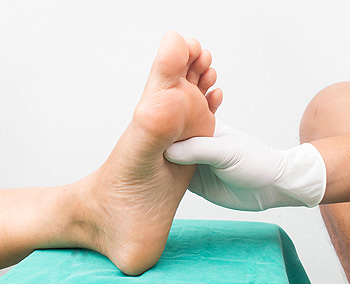
Painful diabetic neuropathy happens when high blood sugar damages nerves, causing pain, burning, or tingling in the feet. One key issue is blood flow. Studies show that people with this condition often have too much blood flow in their feet due to a problem with the sympathetic nervous system. This system helps control circulation, but when it does not work properly, blood flow can be too high, leading to nerve irritation and pain. Research suggests that fixing this blood flow issue could help reduce pain. Understanding why the body reacts this way might lead to better treatments. If you have diabetes and your feet hurt, burn, or tingle, do not ignore it, as it can worsen. It is suggested that you see a podiatrist who can check your feet, suggest treatments and help you manage your symptoms.
While poor circulation itself isn’t a condition; it is a symptom of another underlying health condition you may have. If you have any concerns with poor circulation in your feet contact Dr. Kendall Blackwell of InStride Wilson Podiatry Associates. Our doctor will treat your foot and ankle needs.
Poor Circulation in the Feet
Peripheral artery disease (PAD) can potentially lead to poor circulation in the lower extremities. PAD is a condition that causes the blood vessels and arteries to narrow. In a linked condition called atherosclerosis, the arteries stiffen up due to a buildup of plaque in the arteries and blood vessels. These two conditions can cause a decrease in the amount of blood that flows to your extremities, therefore resulting in pain.
Symptoms
Some of the most common symptoms of poor circulation are:
- Numbness
- Tingling
- Throbbing or stinging pain in limbs
- Pain
- Muscle Cramps
Treatment for poor circulation often depends on the underlying condition that causes it. Methods for treatment may include insulin for diabetes, special exercise programs, surgery for varicose veins, or compression socks for swollen legs.
As always, see a podiatrist as he or she will assist in finding a regimen that suits you. A podiatrist can also prescribe you any needed medication.
If you have any questions, please feel free to contact our office located in Wilson, NC . We offer the newest diagnostic and treatment technologies for all your foot care needs.
Explanation of Plantar Fasciitis
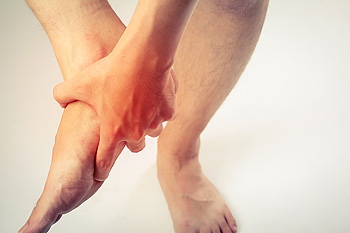
Plantar fasciitis is caused by inflammation of the plantar fascia, the thick band of tissue that runs along the bottom of your foot from the heel to the toes. It is often triggered by repetitive stress, wearing improper footwear, or excessive pressure on the feet. Symptoms include sharp heel pain, especially with the first few steps in the morning or after long periods of rest. The pain may improve as you move, but it often returns after prolonged standing or walking. Swelling and tenderness at the heel are also common. Treatment for plantar fasciitis typically involves rest, exercises, and mild pain relievers. A podiatrist may recommend custom orthotics or corticosteroid injections for persistent cases. In rare cases, surgery may be necessary. This type of doctor can help diagnose and guide you through effective treatments for plantar fasciitis. If you are experiencing this condition, it is suggested that you schedule an appointment with a podiatrist.
Plantar fasciitis can be very painful and inconvenient. If you are experiencing heel pain or symptoms of plantar fasciitis, contact Dr. Kendall Blackwell from InStride Wilson Podiatry Associates. Our doctor can provide the care you need to keep you pain-free and on your feet.
What Is Plantar Fasciitis?
Plantar fasciitis is the inflammation of the thick band of tissue that runs along the bottom of your foot, known as the plantar fascia, and causes mild to severe heel pain.
What Causes Plantar Fasciitis?
- Excessive running
- Non-supportive shoes
- Overpronation
- Repeated stretching and tearing of the plantar fascia
How Can It Be Treated?
- Conservative measures – anti-inflammatories, ice packs, stretching exercises, physical therapy, orthotic devices
- Shockwave therapy – sound waves are sent to the affected area to facilitate healing and are usually used for chronic cases of plantar fasciitis
- Surgery – usually only used as a last resort when all else fails. The plantar fascia can be surgically detached from the heel
While very treatable, plantar fasciitis is definitely not something that should be ignored. Especially in severe cases, speaking to your doctor right away is highly recommended to avoid complications and severe heel pain. Your podiatrist can work with you to provide the appropriate treatment options tailored to your condition.
If you have any questions please feel free to contact our office located in Wilson, NC . We offer the newest diagnostic and treatment technologies for all your foot and ankle needs.
Explanation of Plantar Fasciitis

Plantar fasciitis is caused by inflammation of the plantar fascia, the thick band of tissue that runs along the bottom of your foot from the heel to the toes. It is often triggered by repetitive stress, wearing improper footwear, or excessive pressure on the feet. Symptoms include sharp heel pain, especially with the first few steps in the morning or after long periods of rest. The pain may improve as you move, but it often returns after prolonged standing or walking. Swelling and tenderness at the heel are also common. Treatment for plantar fasciitis typically involves rest, exercises, and mild pain relievers. A podiatrist may recommend custom orthotics or corticosteroid injections for persistent cases. In rare cases, surgery may be necessary. This type of doctor can help diagnose and guide you through effective treatments for plantar fasciitis. If you are experiencing this condition, it is suggested that you schedule an appointment with a podiatrist.
Plantar fasciitis can be very painful and inconvenient. If you are experiencing heel pain or symptoms of plantar fasciitis, contact Dr. Kendall Blackwell from InStride Wilson Podiatry Associates. Our doctor can provide the care you need to keep you pain-free and on your feet.
What Is Plantar Fasciitis?
Plantar fasciitis is the inflammation of the thick band of tissue that runs along the bottom of your foot, known as the plantar fascia, and causes mild to severe heel pain.
What Causes Plantar Fasciitis?
- Excessive running
- Non-supportive shoes
- Overpronation
- Repeated stretching and tearing of the plantar fascia
How Can It Be Treated?
- Conservative measures – anti-inflammatories, ice packs, stretching exercises, physical therapy, orthotic devices
- Shockwave therapy – sound waves are sent to the affected area to facilitate healing and are usually used for chronic cases of plantar fasciitis
- Surgery – usually only used as a last resort when all else fails. The plantar fascia can be surgically detached from the heel
While very treatable, plantar fasciitis is definitely not something that should be ignored. Especially in severe cases, speaking to your doctor right away is highly recommended to avoid complications and severe heel pain. Your podiatrist can work with you to provide the appropriate treatment options tailored to your condition.
If you have any questions please feel free to contact our office located in Wilson, NC . We offer the newest diagnostic and treatment technologies for all your foot and ankle needs.
Arthritis Can Cause Pain in the Feet and Ankles
The Necessity of Proper Foot Care for Diabetic Patients
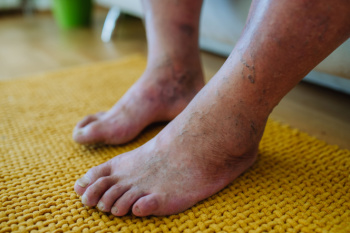
Proper foot care is critical for people with diabetes to prevent serious complications, such as infections, ulcers, or even amputations. Diabetes can reduce blood flow and damage nerves, making it harder to feel pain or detect injuries. Small cuts, blisters, or pressure sores can quickly become infected without proper attention. To care for your feet, wash and dry them daily, especially between the toes. Inspect them regularly for cuts, redness, or swelling, and moisturize to prevent dry, cracked skin. Wear well-fitted, protective footwear to reduce pressure points and avoid walking barefoot. Regular visits to a podiatrist are suggested for professional care and early detection of potential problems.
Diabetic foot care is important in preventing foot ailments such as ulcers. If you are suffering from diabetes or have any other concerns about your feet, contact Dr. Kendall Blackwell from InStride Wilson Podiatry Associates. Our doctor can provide the care you need to keep you pain-free and on your feet.
Diabetic Foot Care
Diabetes affects millions of people every year. The condition can damage blood vessels in many parts of the body, especially the feet. Because of this, taking care of your feet is essential if you have diabetes, and having a podiatrist help monitor your foot health is highly recommended.
The Importance of Caring for Your Feet
- Routinely inspect your feet for bruises or sores.
- Wear socks that fit your feet comfortably.
- Wear comfortable shoes that provide adequate support.
Patients with diabetes should have their doctor monitor their blood levels, as blood sugar levels play such a huge role in diabetic care. Monitoring these levels on a regular basis is highly advised.
It is always best to inform your healthcare professional of any concerns you may have regarding your feet, especially for diabetic patients. Early treatment and routine foot examinations are keys to maintaining proper health, especially because severe complications can arise if proper treatment is not applied.
If you have any questions please feel free to contact our office located in Wilson, NC . We offer the newest diagnostic and treatment technologies for all your foot and ankle needs.
More...
What Can Cause an Ankle Rash?

Ankle rashes can occur due to a variety of factors, and identifying the cause is key to effective treatment. One common cause is contact dermatitis, which happens when the skin reacts to an irritant or allergen. This could include new soaps, lotions, or even certain fabrics. Allergies to foods, medications, or insect bites can also trigger rashes on the ankles, often accompanied by itching and redness. Hives, which are raised, red welts that appear suddenly, can develop in response to stress, certain foods, or medications. Another cause of ankle rashes is sunburn, which can occur when the skin is overexposed to UV rays, leading to redness, pain, and peeling. In some cases, fungal infections like athlete’s foot can cause a rash on the ankles. If an ankle rash persists or worsens, it is suggested that you consult a podiatrist who can determine the underlying cause, and guide you toward appropriate treatment methods.
Ankle pain can have many different causes and the pain may potentially be serious. If you have ankle pain, consult with Dr. Kendall Blackwell from InStride Wilson Podiatry Associates. Our doctor will assess your condition and provide you with quality foot and ankle treatment.
Ankle pain is any condition that causes pain in the ankle. Due to the fact that the ankle consists of tendons, muscles, bones, and ligaments, ankle pain can come from a number of different conditions.
Causes
The most common causes of ankle pain include:
- Types of arthritis (rheumatoid, osteoarthritis, and gout)
- Ankle sprains
- Broken ankles
- Achilles tendinitis
- Achilles tendon rupture
- Stress fractures
- Tarsal tunnel syndrome
- Plantar fasciitis
Symptoms
Symptoms of ankle injury vary based upon the condition. Pain may include general pain and discomfort, swelling, aching, redness, bruising, burning or stabbing sensations, and/or loss of sensation.
Diagnosis
Due to the wide variety of potential causes of ankle pain, podiatrists will utilize a number of different methods to properly diagnose ankle pain. This can include asking for personal and family medical histories and of any recent injuries. Further diagnosis may include sensation tests, a physical examination, and potentially x-rays or other imaging tests.
Treatment
Just as the range of causes varies widely, so do treatments. Some more common treatments are rest, ice packs, keeping pressure off the foot, orthotics and braces, medication for inflammation and pain, and surgery.
If you have any questions, please feel free to contact our office located in Wilson, NC . We offer the newest diagnostic and treatment technologies for all your foot care needs.
Types of Conditions Podiatrists Treat

A podiatrist specializes in diagnosing, treating, and preventing conditions related to the feet, ankles, and lower extremities. Podiatrists are trained to address foot problems, including bunions, heel pain, ingrown toenails, and plantar fasciitis. They also treat more serious conditions such as fractures, infections, and deformities that affect mobility. Podiatrists play an important role in managing chronic diseases that impact foot health, such as diabetes, which can lead to complications like neuropathy and poor circulation. There are various types of podiatrists based on their areas of expertise. Some specialize in surgery, performing procedures to correct deformities or injuries, while others focus on sports medicine, pediatric care, or diabetic foot care. Regardless of their specialty, podiatrists are essential in maintaining foot health and ensuring proper mobility for people of all ages. If you have foot pain or developed a foot condition, it is suggested that you consult a podiatrist who can accurately diagnose and treat various foot conditions.
If you are dealing with pain in your feet and ankles, you may want to seek help from a podiatrist. Feel free to contact Dr. Kendall Blackwell from InStride Wilson Podiatry Associates. Our doctor can provide the care you need to keep you pain-free and on your feet.
What Is a Podiatrist?
A podiatrist is a doctor of podiatric medicine who diagnoses and treats conditions of the foot, ankle, and related structures of the leg. Your podiatrist may specialize in a certain field such as sports medicine, wound care, pediatrics, and diabetic care. Podiatrists have the ability to become board certified through training, clinical experience, and then taking an exam.
What Do Podiatrists Do?
On a daily basis, a podiatrist may perform the following activities:
- Diagnose foot ailments such as ulcers, tumors, fractures, etc.
- Use innovative methods to treat conditions
- Use corrective orthotics, casts, and strappings to correct deformities
- Correct walking patterns and balance
- Provide individual consultations to patients
It is very important that you take care of your feet. It’s easy to take having healthy feet for granted, however foot problems tend to be among the most common health conditions. Podiatrists can help diagnose and treat a variety of feet related conditions, so it is crucial that you visit one if you need assistance.
If you have any questions please feel free to contact our office located in Wilson, NC . We offer the newest diagnostic and treatment technologies for all your foot and ankle needs.
Ankle Fracture Surgery Facts
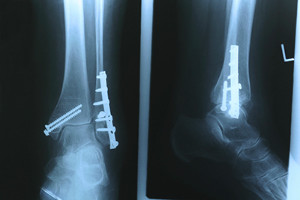
Ankle fracture surgery is performed to treat severe fractures that cannot be healed through non-surgical methods. This type of surgery is often required when bones are displaced, or the fracture is unstable, making it difficult for the ankle to heal properly. During the procedure, the surgeon realigns the broken bones and uses screws, plates, or rods to hold them in place while they heal. Ankle fracture surgery is typically followed by a period of immobilization, often involving a cast or brace to protect the ankle. Rehabilitation, which often includes specific stretches and exercises, is essential to restore strength, flexibility, and range of motion. While complications are rare, they can include infection, nerve damage, or problems with bone healing. If you have fractured your ankle, it is suggested that you consult a podiatrist who can determine what the best treatment is for you, which may include surgery.
Foot surgery is sometimes necessary to treat a foot ailment. To learn more, contact Dr. Kendall Blackwell of InStride Wilson Podiatry Associates. Our doctor will assist you with all of your foot and ankle needs.
When Is Surgery Necessary?
Foot and ankle surgery is generally reserved for cases in which less invasive, conservative procedures have failed to alleviate the problem. Some of the cases in which surgery may be necessary include:
- Removing foot deformities like bunions and bone spurs
- Severe arthritis that has caused bone issues
- Cosmetic reconstruction
What Types of Surgery Are There?
The type of surgery you receive will depend on the nature of the problem you have. Some of the possible surgeries include:
- Bunionectomy for painful bunions
- Surgical fusion for realignment of bones
- Neuropathy decompression surgery to treat nerve damage
Benefits of Surgery
Although surgery is usually a last resort, it can provide more complete pain relief compared to non-surgical methods and may allow you to finally resume full activity.
Surgical techniques have also become increasingly sophisticated. Techniques like endoscopic surgery allow for smaller incisions and faster recovery times.
If you have any questions please feel free to contact our office located in Wilson, NC . We offer the newest diagnostic and treatment technologies for all your foot and ankle needs.
What Is the Purpose of a Walking Boot?
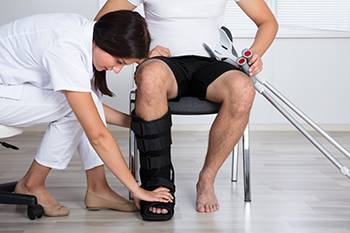
A walking boot, also called a medical boot, is used to protect and stabilize the foot and ankle while recovering from injuries or surgery. This device supports healing by restricting unnecessary movement, which reduces the risk of additional damage. Walking boots are constructed from rigid materials, such as plastic, to immobilize the injured area, while adjustable straps ensure a secure fit. They also help redistribute body weight evenly across the foot, alleviating pressure on specific areas, including bones, tendons, and ligaments. By reducing strain, walking boots promote a more natural walking motion, allowing people to move with less pain. Common injuries that benefit from a walking boot include fractures, sprains, and tendon injuries. A podiatrist can assess the severity of your injury and determine if a walking boot is appropriate, ensuring it provides the correct level of immobilization and support for recovery. If you have sustained a foot or ankle injury, it is suggested that you schedule an appointment with a podiatrist for an exam and treatment options, which may include a walking boot.
If you are having discomfort in your feet and would like to try orthotics, contact Dr. Kendall Blackwell from InStride Wilson Podiatry Associates. Our doctor can provide the care you need to keep you pain-free and on your feet.
What Are Orthotics?
Orthotics are inserts you can place into your shoes to help with a variety of foot problems such as flat feet or foot pain. Orthotics provide relief and comfort for minor foot and heel pain but can’t correct serious biomechanical problems in your feet.
Over-the-Counter Inserts
Orthotics come in a wide variety of over-the-counter inserts that are used to treat foot pain, heel pain, and minor problems. For example, arch supports can be inserted into your shoes to help correct overarched or flat feet, while gel insoles are often used because they provide comfort and relief from foot and heel pain by alleviating pressure.
Prescription Orthotics
If over-the-counter inserts don’t work for you or if you have a more severe foot concern, it is possible to have your podiatrist prescribe custom orthotics. These high-quality inserts are designed to treat problems such as abnormal motion, plantar fasciitis, and severe forms of heel pain. They can even be used to help patients suffering from diabetes by treating foot ulcers and painful calluses and are usually molded to your feet individually, which allows them to provide full support and comfort.
If you are experiencing minor to severe foot or heel pain, it’s recommended to speak with your podiatrist about the possibilities of using orthotics. A podiatrist can determine which type of orthotic is right for you and allow you to take the first steps towards being pain-free.
If you have any questions please contact our office located in Wilson, NC . We offer the newest diagnostic and treatment technologies for all your foot and ankle needs.


